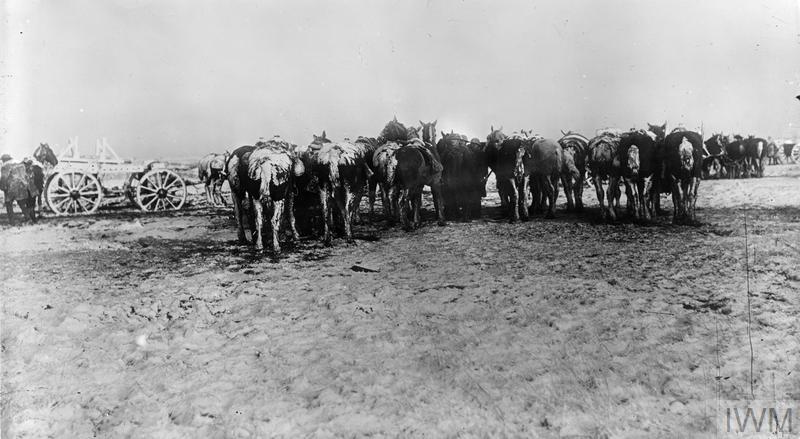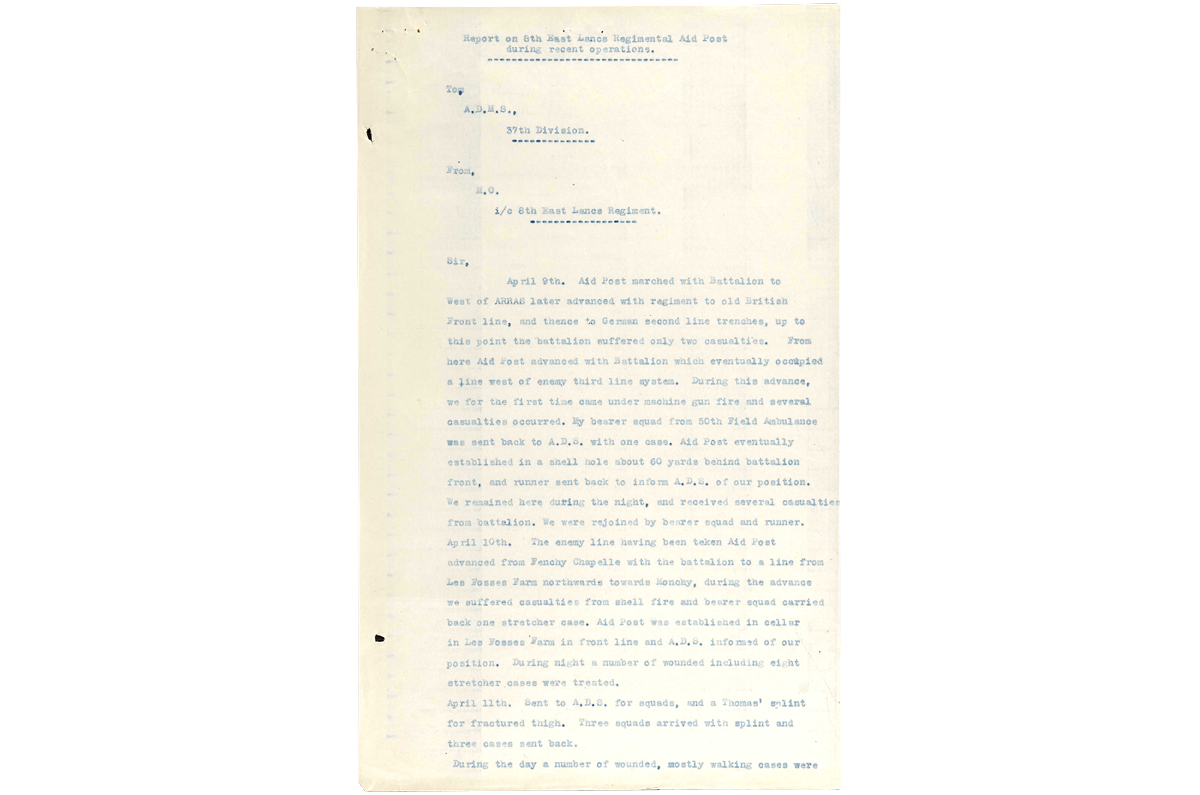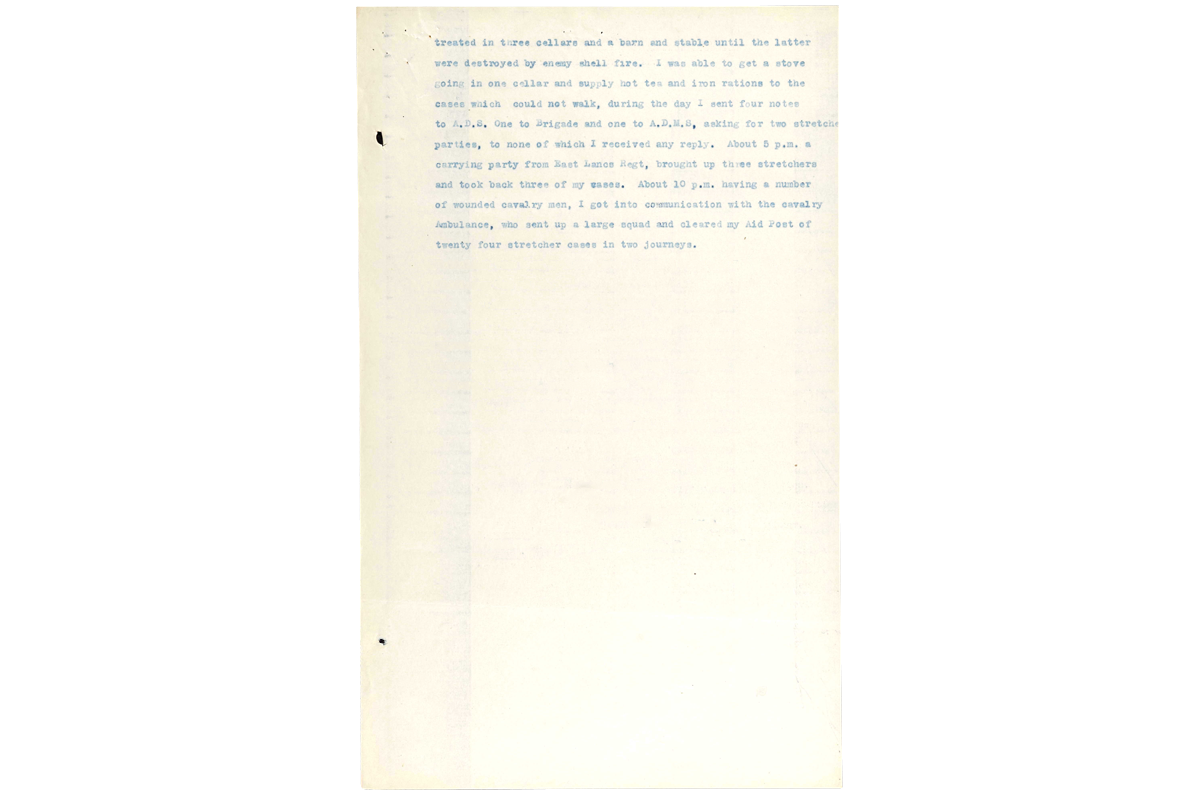April 11, 1917

April 11, 1917
April 11th. Sent to A.D.S. for squads, and a Thomas’ splint for fractured thigh. Three squads arrived with splint and three cases sent back.
During the day a number of wounded, mostly walking cases were treated in three cellars and a barn and stable until the latter were destroyed by enemy shell fire. I was able to get a stove going in one cellar and supply hot tea and iron rations to the cases which could not walk, during the day I sent four notes to A.D.S. One to Brigade and one to A.D.M.S. asking for stretcher parties, to none of which I received a reply. About 5 p.m. a carrying party from East Lancs Regt, brought up three stretchers and took back three of my cases. About 10 p.m. having a number of wounded cavalry men, I got into communication with cavalry Ambulance, who sent up a large squad and cleared my Aid Post of twenty four stretcher cases in two journeys.
Battalion was then relieved and I handed over Aid Post to M.O. of Middlesex Battalion.
[Account of the attack on Monchy – 11 April 1917 by Private Ernie Wilford of 11th Royal Warwicks, 112th Brigade:
It was so cold that morning that we took our boots off stuffed them with straw and set fire to it. Then we put our feet in ’em. That was the only warmth we got. Well, the attack went in, and we got no briefing at all. I hadn’t got a clue where I was going. That was the trouble, you never knew what you were supposed to be doing. I seemed to be harnessed in a mob. Where the mob went, I went – just follow the crowd . . . like sheep really. Well right from the start I threw my pack away. It was too heavy and what with slipping in the slush I didn’t care less. Then I saw it – you wouldn’t believe it, just on the left of the Arras-Cambrai Road, long lines of men just mowed down, lying flat where they went forward. 1.]
[Account of the 3rd Cavalry Divisional taking part in the attack on Monchy – 11 April 1917:
You have never seen cavalry like them – mud encrusted figures in flat metal helmets, men with three days’ beards and faces covered with grime in no way suggesting the smart Lancers, Dragoons or Hussars of other days. They had slept in shell holes or lain in mud and rain with no protection save their greatcoats. 2.]
[Account of one of the last charges of the British Cavalry by Private Thomas Heap of the 8th East Lancs:
It was here that I had witnessed a tragedy. I watch a cavalry charge moving up from Arras into the village. They were massacred, there were horses and riders falling all over the place and very few survived. 3.]
[A.D.S. – Advanced dressing station. This was the 2nd unit in the chain of medical evacuation after the Regimental Aid Post which was located just behind the fighting front line.]
[A.D.M.S. – Assistant Director of Medical Services. In this context, the commanding officer of the 50th Field Ambulance. Each Division would have three Field Ambulances. Arthur belonged to the 50th Field Ambulance, 37th Division. A typical Field Ambulance comprised 10 officers and 224 men.]
1. Nicholls, J., Cheerful Sacrifice p. 142. (Leo Cooper: 1990)
2. The War Illustrated, 19 May 1917
3. Barker, S. & Boardman, C., Lancashire’s Forgotten Heroes p.119 (The History Press: 2008)
Image Credits
Imperial War Museum


